What are the strongest factors that influence your customers to buy?
Social proof, first introduced by Robert Cialdini in “Influence“, is one of the most impactful drivers of consumers’ purchase decisions.
As an ecommerce site, socially-reinforced trust signals can help you:
- Increase conversion rates.
- Improve the trustworthiness of your brand.
- Increase consumers’ confidence in transacting with you.
Here are seven tactics for incorporating social proof into your ecommerce site.
1. Transactional Pop-ups
A core tenet of social proof is that in an uncertain situation, we rely on individuals around us to make us feel certain about our decisions.
Transactional pop-ups allow ecommerce sites to provide quick bursts of social proof by displaying real-time reviews, recent transactions, and website activity.
This form of social proof is effective because you’re able to provide third-party reviews that are highly influential in most purchase decisions.
You can even curate these reviews so you are only showing the most helpful content for your readers, as opposed to prospects trying to seek reviews out themselves and perhaps being influenced to not buy.
I won’t lie – this social proof may have influenced my decision to buy a Nectar mattress:
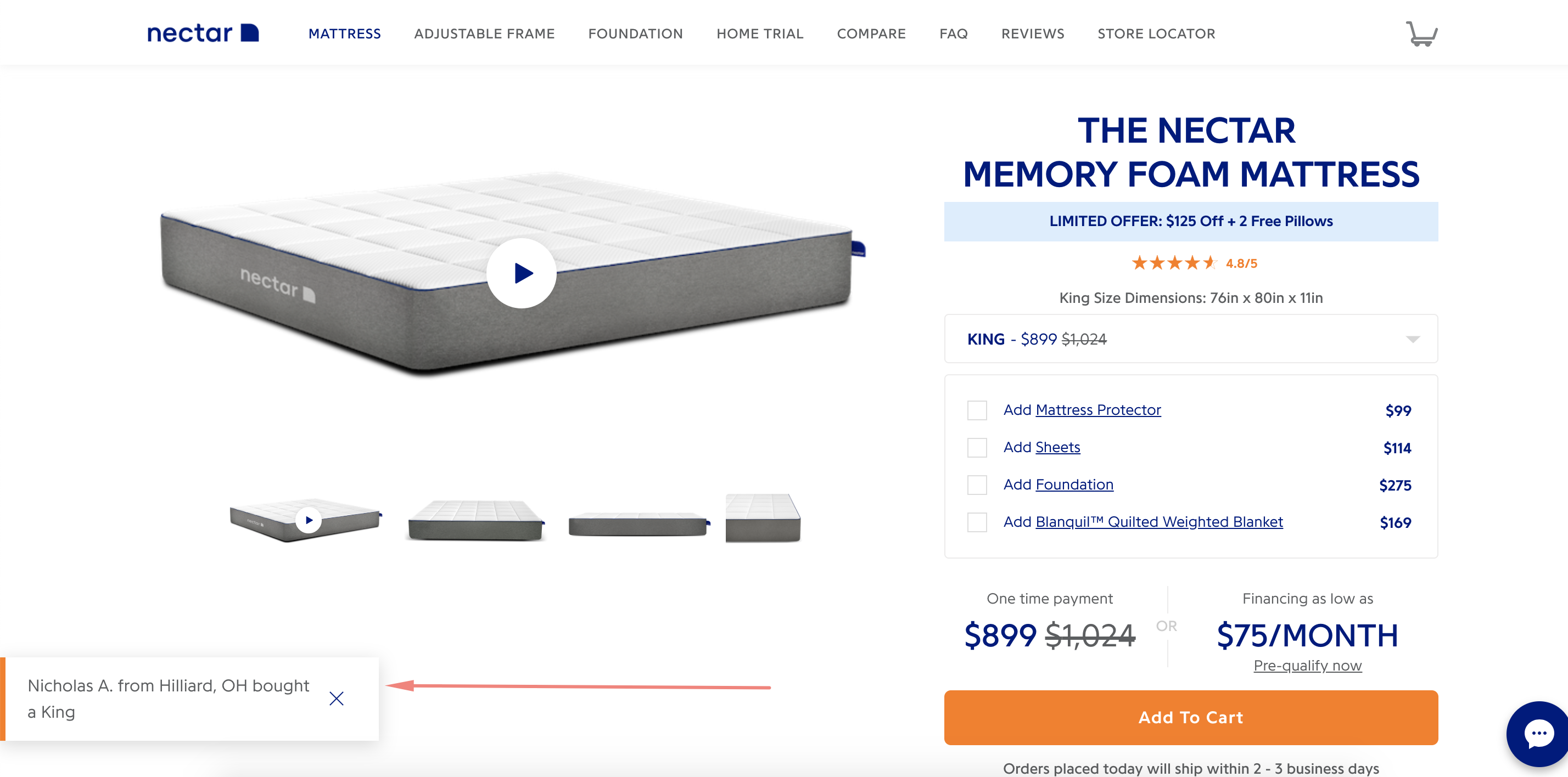
2. User-Generated Content
UGC is one of the biggest drivers of social proof for ecommerce sites. Both onsite and offsite reviews, testimonials, and images of your customers using your products are marketing gold for business growth.
One of the challenges with UGC is that it can be hard to find, get permission to use, and integrate into your ecommerce platform or CMS.
Thankfully, there are a number of plugins and solutions (e.g., Pixlee, Curalate) that can provide this functionality for your site.
Here are a few examples:
Article.com
I’m currently in the hunt for a new lounge chair. This section provides both the context of the product in someone’s home and a review to show satisfaction with the brand.
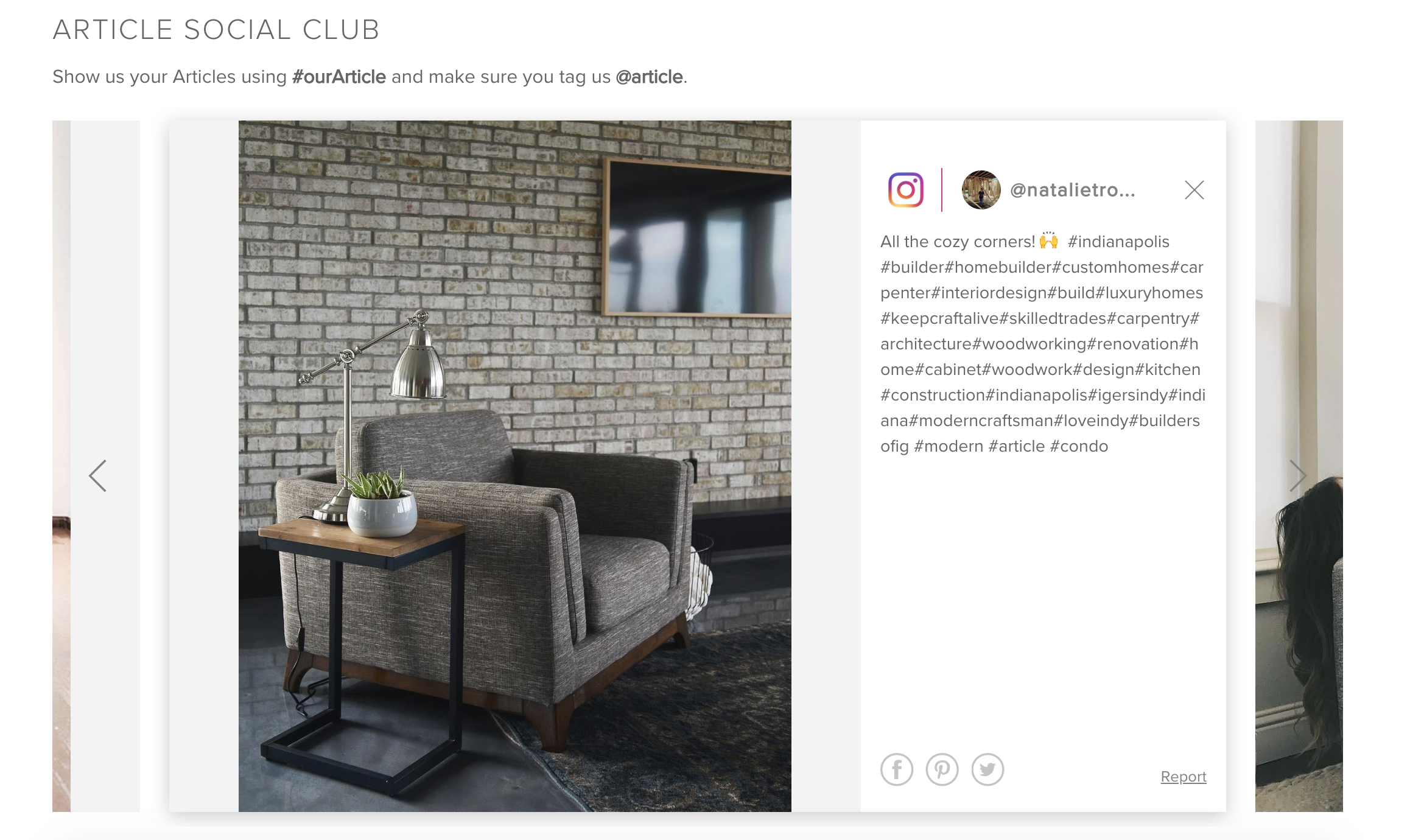
Aloyoga.com
Here is a similar example for yoga clothing. Curated social media images like these can appear more authentic than the model in the “official” product image.
In my experience running social media ads, lower-quality, candid photography often outperforms overproduced, glossy stock photography.

3. Recommendations
Obviously, your website needs a review system to share social trust signals.
One of the issues with most review systems is that if you don’t have a high volume of reviews, the buyer might assume you don’t have many customers, your customers don’t buy specific products lines, and/or that your products are not good.
Recommendations are a great pairing or substitute for reviews because they give potential customers a binary look at whether current customers recommend your products.
These recommendations can be aggregated to give you a percentage of recommended buyers, similar to an NPS (net promoter score) at the product level.
Here’s an example from Urban Outfitters:
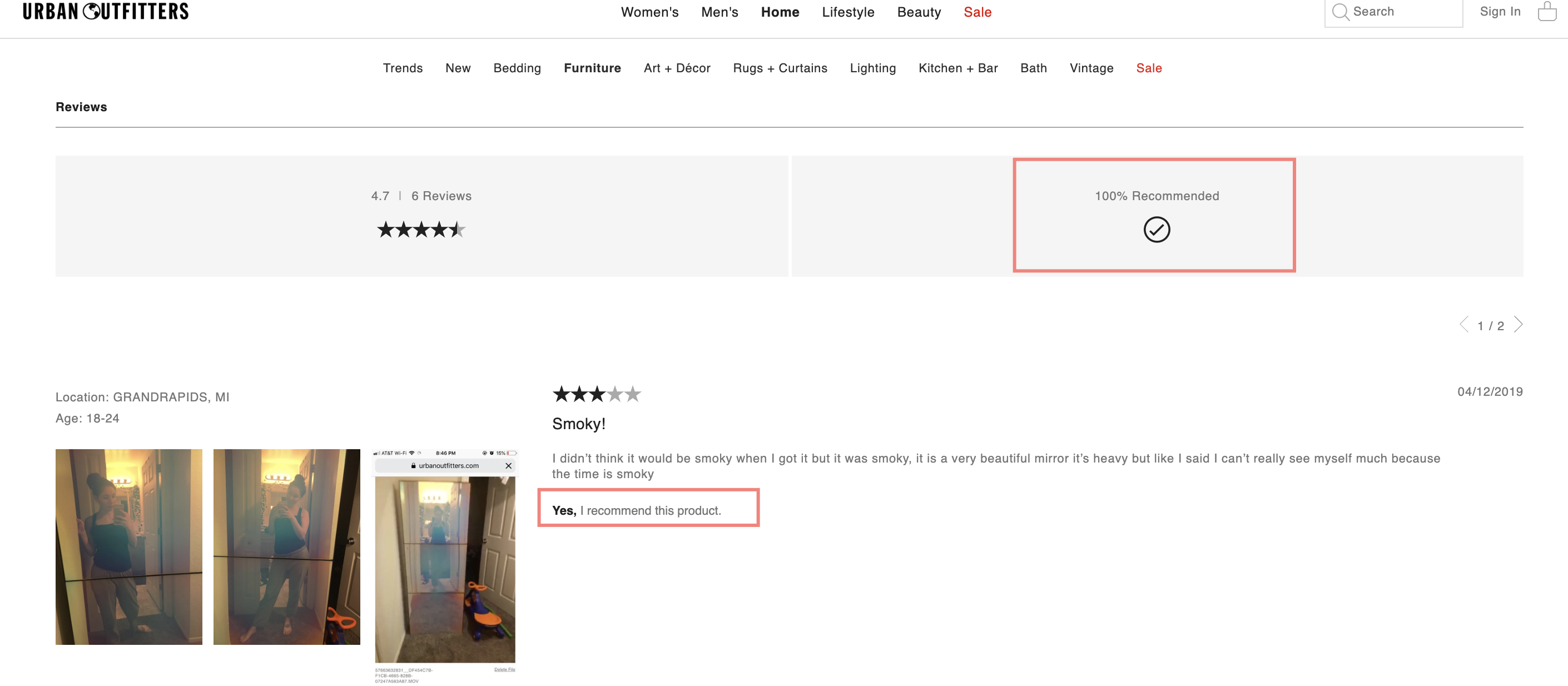
4. Getting More out of Your Review Content
Five-star rating systems are the gold standard for reviewing products, yet most ecommerce sites don’t extract enough value from this user-generated content.
Here are a couple of useful ways that your visitors can gain even more context for your products.
Search
Don’t make your users scan every review to find the answers they are looking for.
Give your customers the ability to quickly search reviews to find the features, specs, and concerns that are most important to them.
Here’s an example from Guitar Center:

Review Analytics
Your visitors will likely read reviews from people who either hated or loved your product. Make it easy for them to filter based on the star rating.
Obviously, we all want more sales; however, we want buyers to disqualify themselves, before they buy, if the product is not a good fit for them.
Don’t let negative reviews pile up because you didn’t do a good job disqualifying customers before they bought.
Here is social proof from a niche ecommerce site:

As well as Amazon: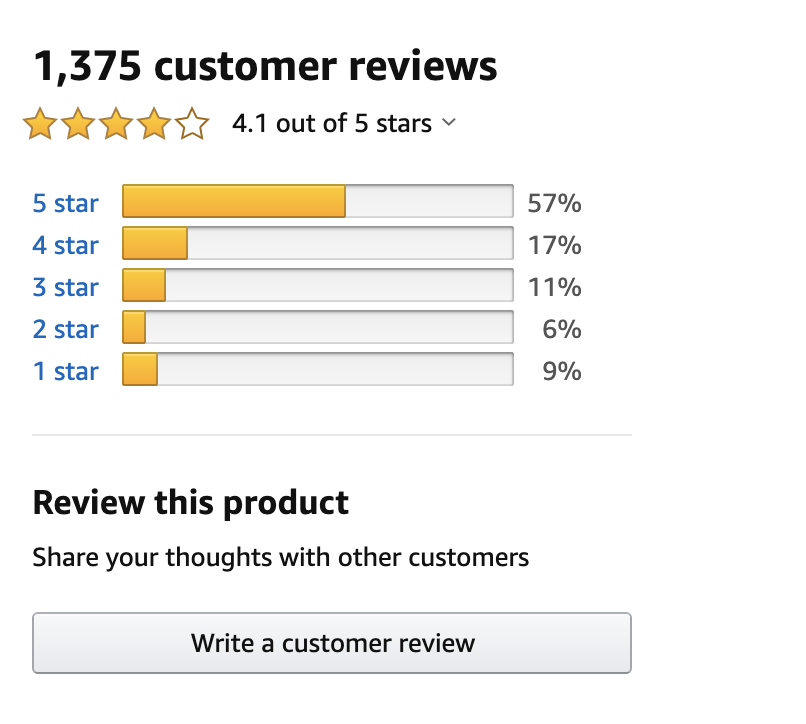
5. FAQs
Curate questions from your customer service ticketing system to identify and answer top-asked questions about your products.
Social proof isn’t just about showing the raving reviews of your products – it’s also about proving that your brand or brand advocates are responsive to your customers’ needs for any question that comes up.
Here is an example from Home Depot:

Home Depot employees, suppliers, and advocates are active across product pages to provide helpful feedback on customers’ frequently asked questions.
6. Third-Party Validation
This is one of the oldest social proof tactics for marketers but is still effective. What signals can you send to your buyer that your products are trustworthy?
An influencer marketing program can help you highlight this. Identify ways to incorporate blogs, case studies, or testimonials for industry-known celebrities on your product and product-category pages.
Here’s an example of a blog post featuring a rising star golfer who uses a specific golf club this website is selling:
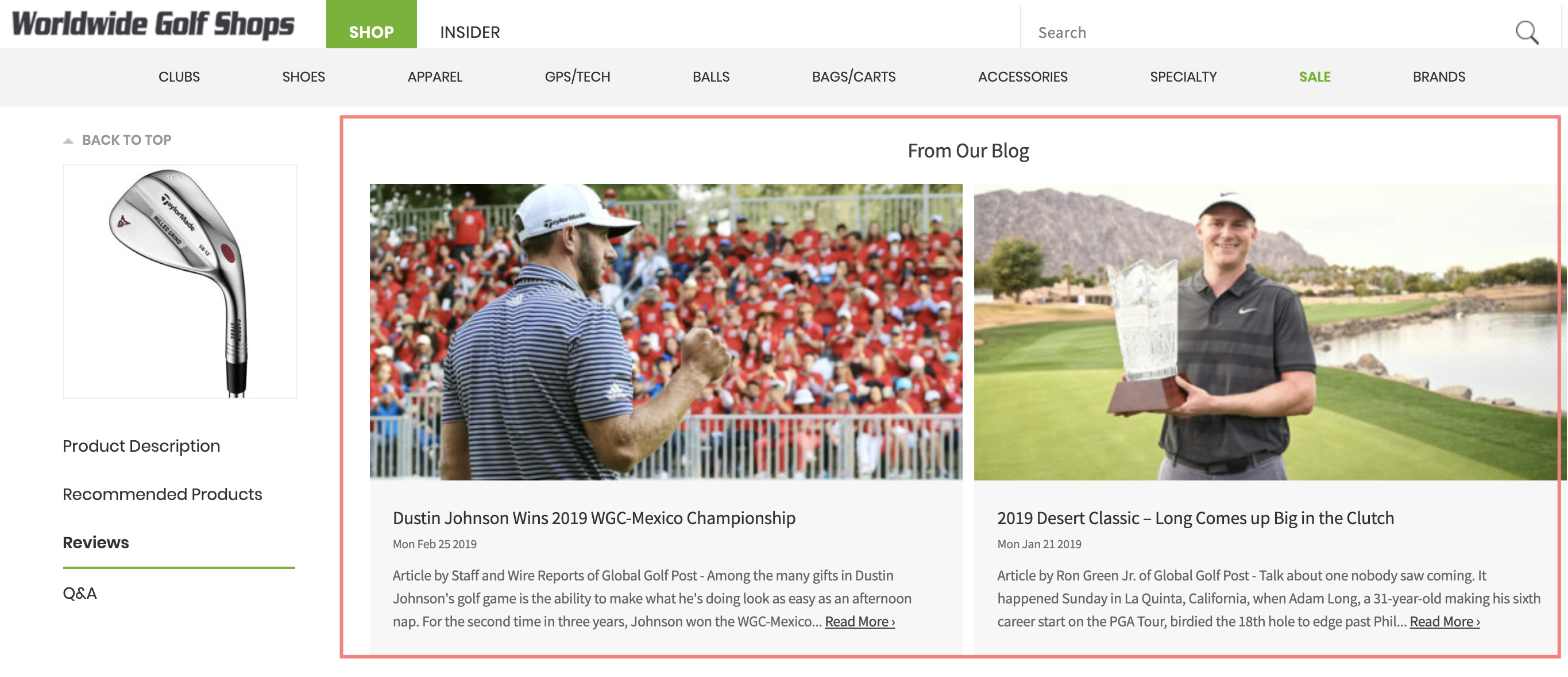
Similarly, are there ways you can connect your ecommerce brand to other well-known brands that your buyer trusts?
Add the logos of partnerships, sponsorships, awards, and press mentions that your brand has gained since inception.
Here are a couple of examples from Quip and Tortuga:
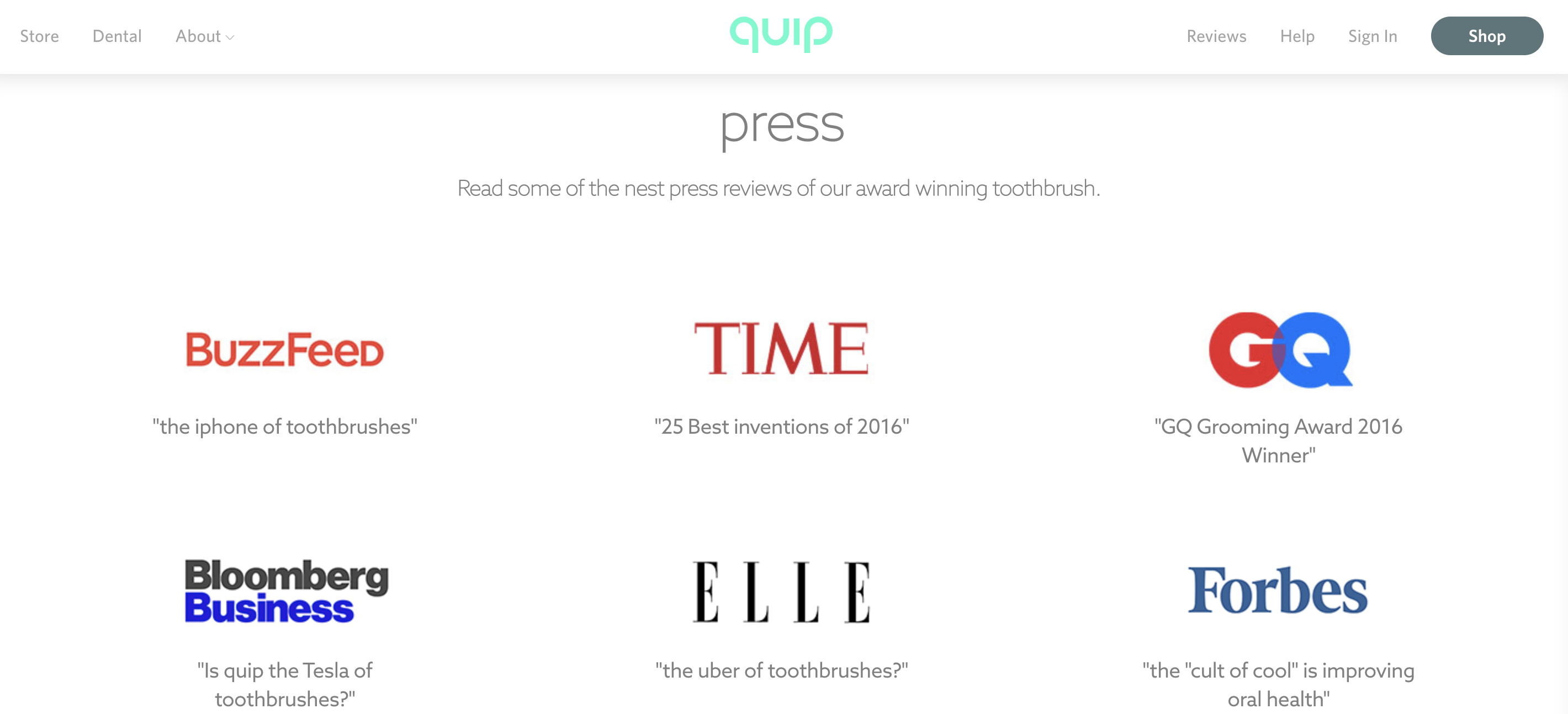

7. Trending or Best-Selling Features
No one likes to look like a fool when receiving your product. Use social proof to eliminate this concern by incorporating trending pages, sections, or elements in your site.
Most ecommerce systems allow you to sort a list of products by best selling. Build out a page with your top-selling products.
You can take this further by incorporating social proof within product pages.
If you sell five variations of a single product, let your customers know which ones are most popular. This can be useful across verticals.
On the fashion vertical, consumers may not want the most popular SKU so that they don’t come across someone wearing the same item.
On the other hand, if I’m shopping for power tools, I may want the most popular SKU because others have clearly tested the item and I can trust that it will help me get the job done.
Many options are available for incorporating social proof elements at the macro level all the way to the individual SKU level.
Conclusion
Whether you sell to a B2B or B2C audience, social proof is one of the most impactful ways to improve conversion rates, grow sales, and develop an active network of brand advocates.
More Resources:
- 3 Ways Social Proof Boosts Customer Acquisition & ROI
- 5 Ways User-Generated Content Can Boost Your SEO
- Using 6 Principles of Persuasion to Increase Conversions
Image Credits
Featured Image: Mike Petrucci/Unsplash
All screenshots taken by author, April 2019





